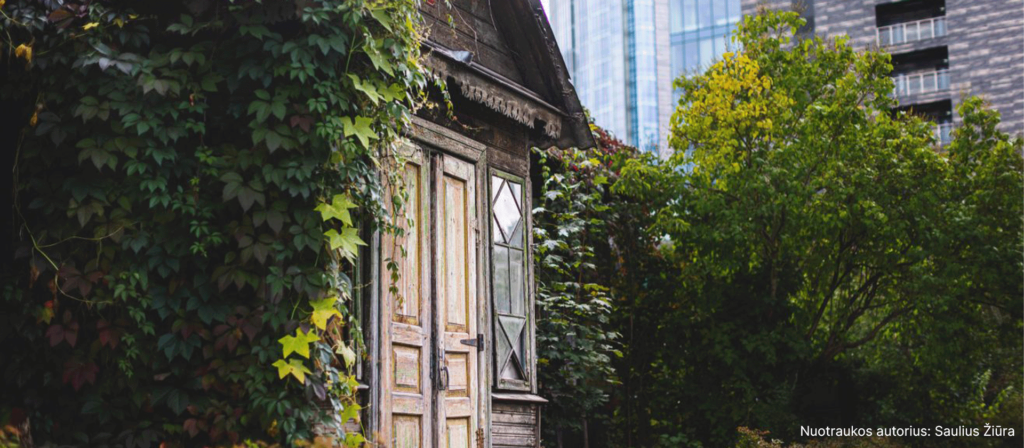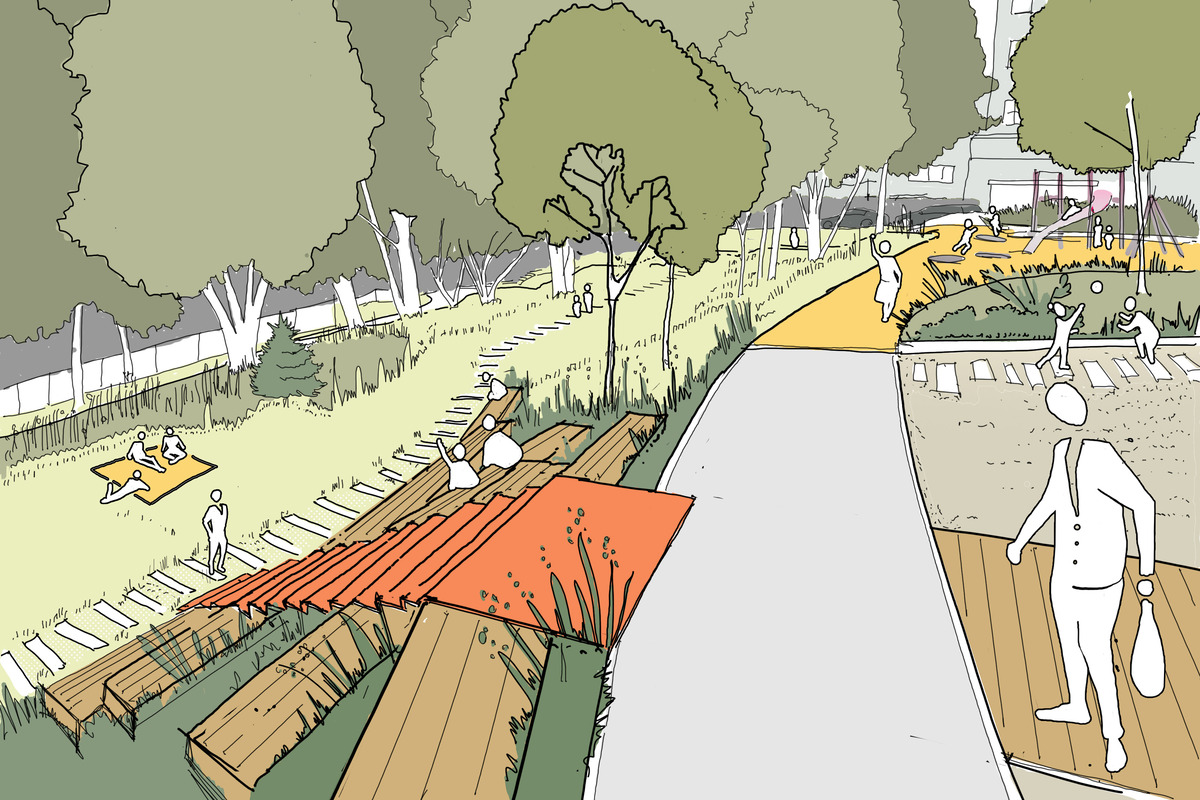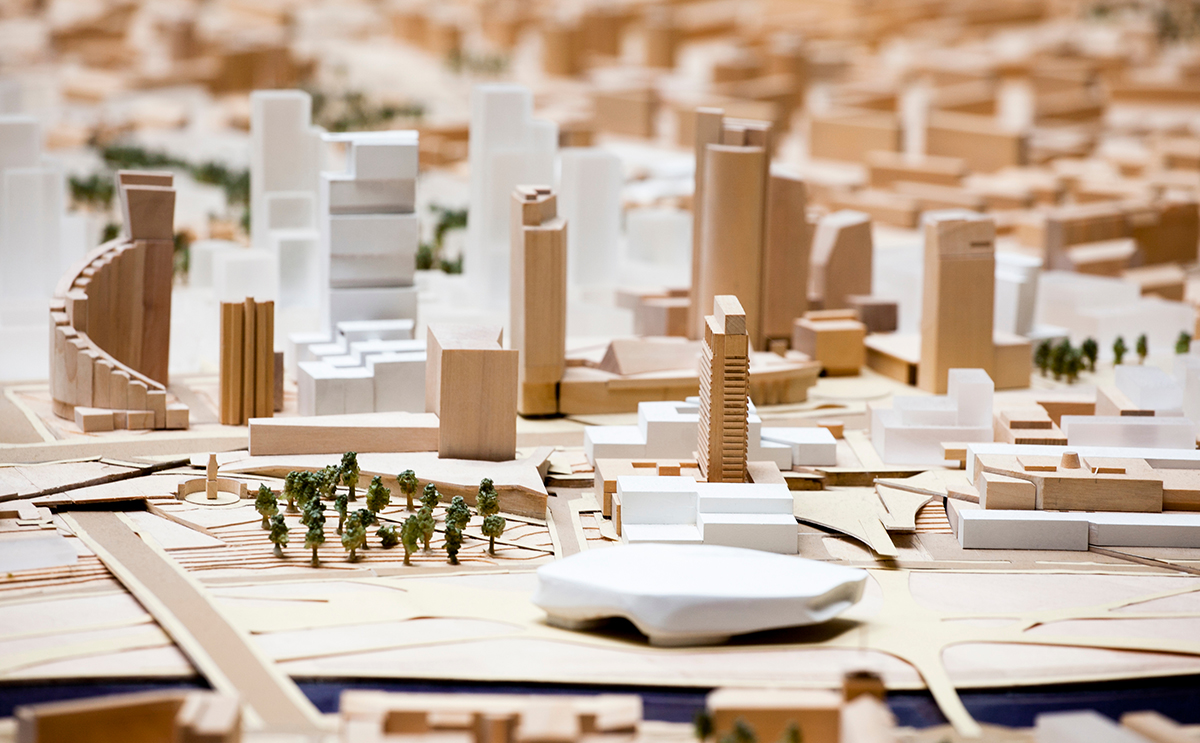As part of the LIFE GreenMe5 project, Vilnius City Municipality will test various measures to reduce traffic noise and air pollution in a part of Salomėja Neris Street. It is planned to apply the successful measures to other streets in Vilnius. “Noise and air pollution is one of the biggest problems in cities. We have prepared a noise prevention plan for the next four years, and we are also monitoring air pollution and taking measures to reduce it by renewing our public transport fleet and promoting sustainable mobility. And on Salomėja Neris Street, we will test which measures have the greatest effect in reducing noise and air pollution in a particular place,” says Andrius Grigonis, Vice Mayor of Vilnius, who is in charge of the LIFE GreenMe5 project. The Change Street was selected from more than 300 streets or sections of streets in Vilnius. The most suitable one was selected taking into account air pollution, noise pollution, population density, proximity to educational and health institutions, stadiums, playgrounds and public transport stops. It was also assessed whether it would be able to accommodate a range of noise and pollution abatement measures. “Air pollution modelling and GIS data analysis helped to select the street. We chose from the most problematic streets in the capital, where most of the population suffers from air and noise pollution,” says Linas Vaitkevičius, an environmental expert at ID Vilnius, who carried out the analysis. Among the potential streets selected were M. Marcinkevičius St., Paribio St., Kęstučio St., Vytauto St., L. Giros St. and Smolensko St. After evaluation of all the indicators, the section of Salomėja Neris Street in Fabijoniškės between P. Žadeika Street and Gedvydžių Street was selected as a pilot site. This street runs parallel to the highly trafficked Ukmergės street. On one side of Salomėjos Neries Street is built up with commercial buildings and on the other side with residential houses. At the beginning of the street there is the Fabijoniškės Gymnasium and a sports ground. The pollution of this street is described as medium. About 550 inhabitants live within 50 m of the street in question, half of them children or elderly people, but the number of inhabitants increases with distance.

Noise and air pollution sensors will initially be installed on Change Street. They will accurately measure air quality and noise levels at different times of the day, on different days of the week. This will be followed by the introduction of various noise and air pollution mitigation measures, such as intensified street maintenance (more frequent cleaning and washing), natural vegetation barriers in the form of dense street planting, as well as various traffic restrictions or other measures. “We will invite residents and businesses in the area to join us in making a difference. One of the main sources of noise and air pollution in the city is car traffic, so we will encourage residents and employees to use their own cars as little as possible,” said Giedrius Kavaliauskas, Chief Specialist at the Project Management Unit of Vilnius City Municipality and LIFE GreenMe5 Project Manager. After each implemented change, air and noise pollution indicators will be analysed on the selected street. They will also be tracked by the residents themselves in the City Lungs app. It provides real-time data on air pollution and pollen concentrations in Vilnius city from 35 sensors. “LIFE GreenMe5 aims to make a difference in five areas: reducing air and noise pollution, promoting biodiversity, managing water resources and promoting a circular economy. In addition to Vilnius, the project involves city administrations in Spain, Italy and Sweden. Each of them has chosen to make a change in one of these five areas. The project is funded by the EU’s LIFE programme. The total value of the project is €257.6k, 60% of which is EU funding. EUR 100 000 has been earmarked for the co-financing of the project in accordance with the Ministry of the Environment’s “Procedure for the Allocation of Co-financing to Environment and Climate Policy Programme (LIFE) Projects”. The duration of the project is four years.
More information on the project greenme5.vilnius.lt
S. Žiura photo.




